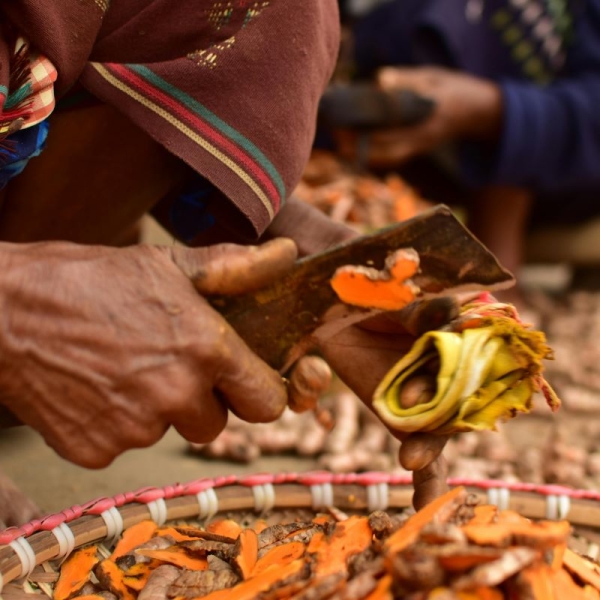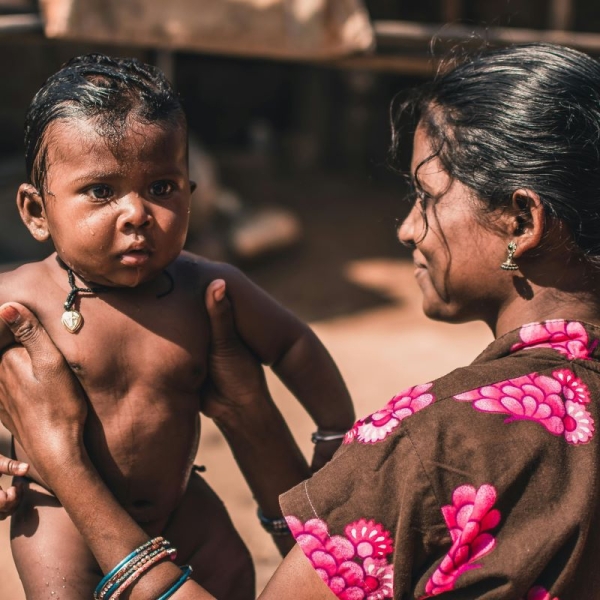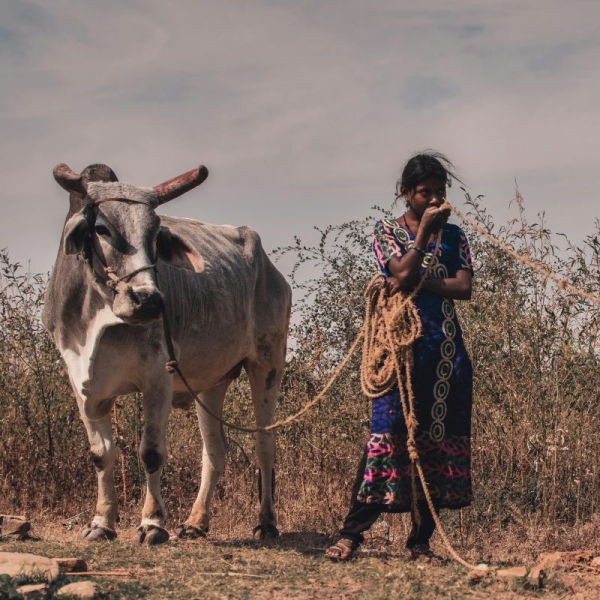Contents
Mother and child, Odisha, India (All images credit: Praji Photography).
22 Aug 2024 — New research by the Alliance Bioversity International and the International Center for Tropical Agriculture measured the Women’s Empowerment in Agriculture Index (WEAI) in 1,900 farm households in the state of Odisha, India. The study finds that women’s engagement in decision-making is linked to having fewer children experiencing underweight and wasting.
“We conducted this study in India among the Odisha particularly vulnerable tribal groups to fill the gap of the limited evidence of the impact of agricultural interventions among vulnerable population groups,” Sylvester Ogutu, a researcher for the Alliance of Bioversity International and the paper’s lead author, and Jonathan Mockshell, an agricultural economist at the Alliance of Bioversity International and CIAT, study lead, and a co-author of the paper, tell Nutrition Insight.
The WEAI was created with the aim of identifying obstacles and economic constraints limiting women’s contributions to their households and communities. The study published in PLOS ONE applied the index and compared findings to measures of children’s food security, such as the number of different food types found in the household and the weight of children for their age.
“Women’s empowerment in agricultural input use, output sales, income, food purchases, credit, group membership and employment contribute to the improved dietary diversity and child nutrition,” Ogutu and Mockshell explain.
“Strengthening women’s empowerment through the promotion of women’s access to land and other agricultural inputs, market participation, access to information, capital and credit is important.”
Study findings
The study authors point out that globally, smallholder farmers in low- and middle-income developing nations are the people most susceptible to hunger and micronutrient deficiencies — and the associated nutrition-related diseases, impaired growth and cognitive abilities of children.

Women’s empowerment shown to have a positive effect on the household dietary diversity score.According to the data analysis of the women’s empowerment indicators presented in the paper, women made only 10–12% of the total intra-household decisions independently in two survey rounds. Meanwhile, about 13% of the decisions were made jointly and 75% of the decisions were made by men.
The study finds women’s empowerment has a positive effect on the household dietary diversity score, which considers the economic ability of a household to afford dietary diversity.
Mockshell notes: “The magnitude of the effect of women’s empowerment on dietary diversity was relatively small, which suggests that complementary interventions may be required to achieve higher household dietary diversity.”
The researchers considered the height and weight of children. Women’s empowerment was shown to significantly increase children’s weight-for-age z-scores and weight-for-height z-scores, but not their height-for-age scores.
“The improvements in the z-scores contributed to reduced prevalence of underweight and wasting in children with mothers with a higher empowerment score,” he adds.
The study uses two rounds of panel data collected through baseline and mid-term surveys, which were conducted in June 2017 and November 2021, respectively.
Previous research has linked women’s empowerment to improved child nutrition. UNICEF’s most up-to-date recommendations on alleviating children’s malnutrition identify women’s empowerment as a key factor. Yet, this paper by Ogutu and Mockshell is the first one to examine this link among such vulnerable farming communities.
“Women and children have generally been considered vulnerable and have been studied, but studies focusing on populations with disparities in physical, economic and social status when compared with the dominant populations are rare,” the authors write.
“The effects of different domains of women’s empowerment on nutritional outcomes, including dietary diversity and child anthropometry, have rarely been examined, especially with panel data.”
Ogutu and Mockshell tell us that their findings have broad implications for child malnutrition elevation. “Women’s empowerment contributes to improved dietary diversity and child nutrition and is a promising strategy to improve farm household diets and child nutrition among vulnerable populations.”
“Strengthening women’s empowerment through the promotion of women’s access to land and other agricultural inputs, market participation, access to information, capital and credit is important,” they detail.
“Complementary interventions are needed to address malnutrition as women’s empowerment may not address all forms of malnutrition. In the study context, women’s empowerment did not have an effect on the prevalence of child stunting.”
Asked in what ways could the local governments in Odisha use the findings to improve child nutrition and women’s empowerment through their policies, Ogutu and Mockshell respond: “Strengthening women’s empowerment by championing and designing programs that promote women’s access to land and other agricultural inputs, market participation, access to information, capital and credit.
By Milana Nikolova


